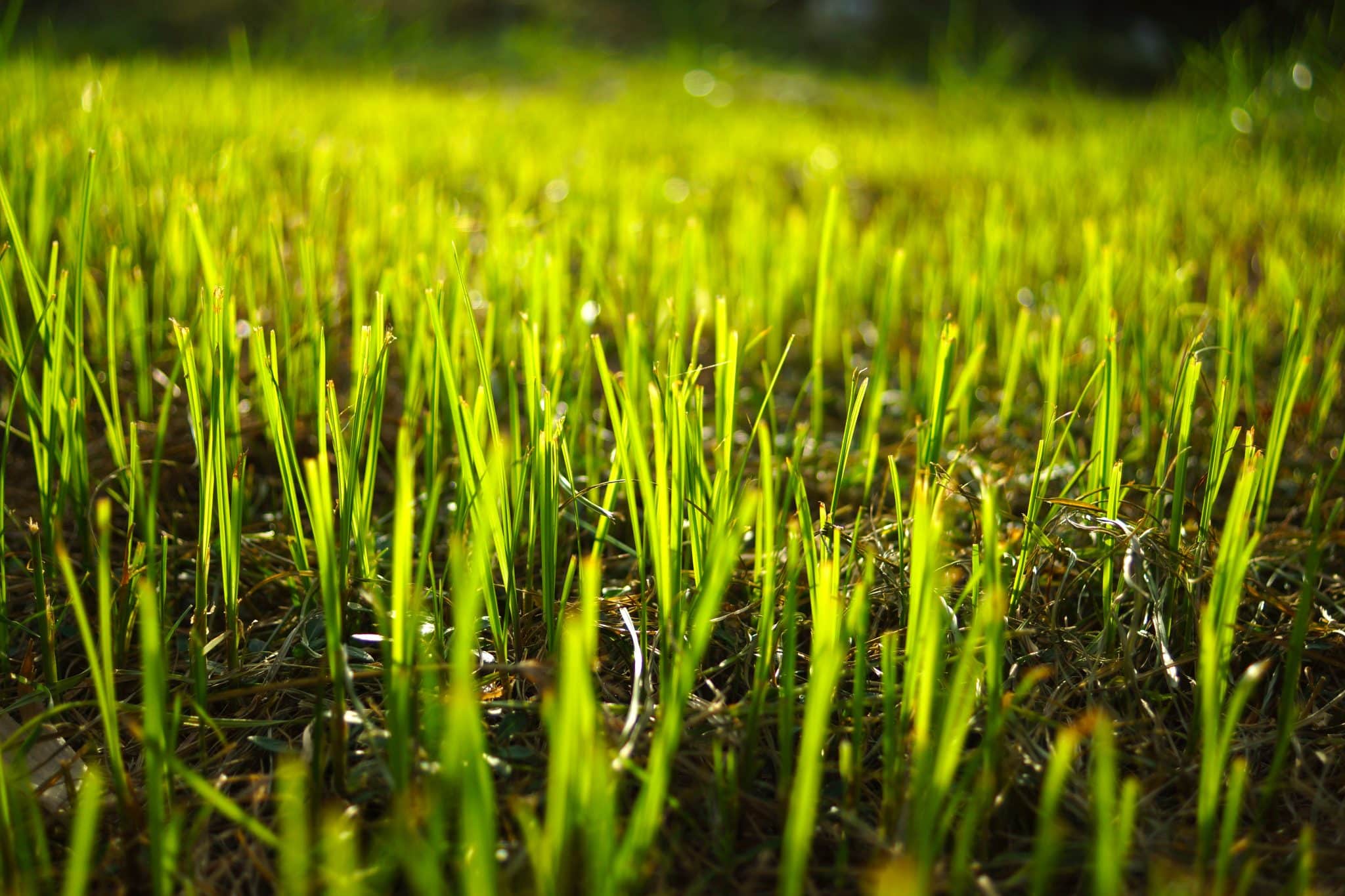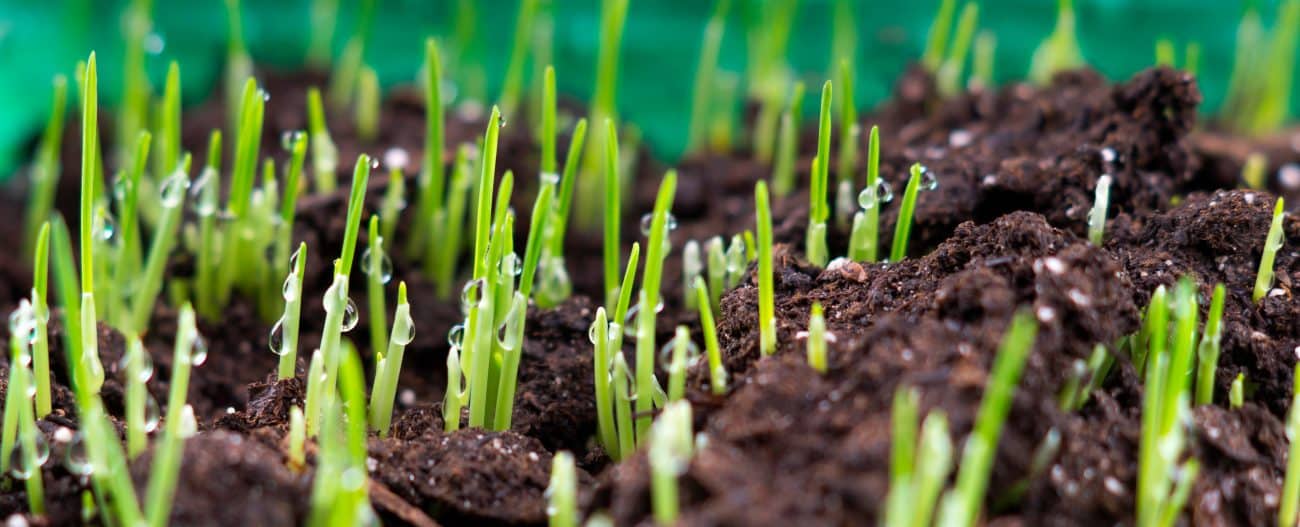How Often Should You Water New Grass Seed

Planting and preparing a new lawn takes a lot of hard work, but how often should you water new grass seed? And what else should you know about growth maintenance? Seeded lawns can be very finicky, so it’s important to figure out the best watering plan before you even get started planting.
How often to water grass seed depends on where you live, what time of year it is, and what type of grass seed you’re working with.
For example, if you live in an area that receives a lot of precipitation and you’ve planted a seed that doesn’t need much sunlight, you will probably need to water your new grass seed less than the average grower.
On the other hand, if you live in a dry climate and have planted grass seed that thrives in full sunlight, you will probably need to follow a strict watering schedule.
Either way, watering new grass seed is crucial for proper growth and germination.
Here’s How Often to Water Grass Seed
Regardless of where you live, there are some hard and fast rules regarding how often to water grass seed.
Before Planting
The first thing to keep in mind is that you will need to water your plot of land before planting new grass seed. This ensures the soil is already moist when the seeds make contact—encouraging a successful planting.
PRO TIP: While watering before planting is important, remember that waterlogged soil won’t allow new grass seed to grow. The goal is not to drown the land before planting: just water it enough for moisture to sink down a few inches.
Immediately After Planting
Once your grass seed is in the soil, be sure to water it right away. In most cases, you should water new grass seed for about 10–15 minutes, 3 times per day during the first week. Again, watering new grass seed is all about finding that sweet spot of soil moisture—don’t let the soil get overwatered and soggy, and don’t let it get dried out.
PRO TIP: Make sure the water pressure isn’t too high, or you risk washing seeds away. Apply the water as evenly as you can with a mist setting on your hose or a gentle oscillating portable sprinkler. Built-in impact sprinklers may be too rough on new seed.
Before and After Germination

Continue watering your new grass seed consistently until you see germination (plants actually breaking through the soil to the surface). Once your grass has popped up, you should continue watering, but less frequently. 1–2 times per day for about 30 minutes is a good goal, adjusting for the weather.
PRO TIP: Cover new grass seed with peat moss or an alternative if you’re expecting heavy rainfall. This will help protect the seeds from washing away (and keep birds from feeding on the seed as well).
After Continued Growth
If all goes well, your grass seed should continue to grow after germination. When you start to see consistent growth, you can decrease your watering to once per day, then every other day, for about 30 minutes each. A mature seeded lawn should be watered 2–3 times per week for 20–30 minutes.
PRO TIP: Don’t attempt to mow your newly seeded lawn (or walk on it) until the grass has reached a few inches in height. During the first few weeks, your sprouted grass will still be fragile. Soil should be damp, but undisturbed.
Cool Season Grass vs. Warm Season Grass
So how often should you water new grass seed? The answer will vary greatly depending on the type of grass seed you plant. Most grass seed varieties can be classified into two categories: cool-season grass and warm-season grass.
Cool Season
Cool-season grasses thrive in more moderate temperatures and include widely popular varieties like Kentucky Bluegrass and Fescue. These grass types tend to germinate faster than warm-season grasses, don’t need as much sunlight, and require less water initially. Because of the quick growth and shade tolerance, cool-season grasses are typically more readily available for sale.

If you plant a lawn with cool-season grass seed, you will likely see results 1-2 weeks after you begin watering. This means you can adjust your watering schedule sooner, reducing the length and intervals.
Warm Season
Warm-season grasses are popular in areas that receive a lot of sunlight and include Bermudagrass and Zoysia. These grasses take longer to germinate and therefore require more watering initially when planted from seed. However, once warm-season grasses become established, they are extremely drought-resistant and durable.

Warm-season grass seed can take 2–4 weeks to germinate and needs consistent water and sunlight. In fact, late spring is a good time to plant these varieties so they can benefit from hot summer weather.
Effect of Climate on Watering New Grass Seed
Any lawn expert will tell you to pay close attention to the forecast before planting new grass seed, as the weather can have a big impact on your seeded lawn. Extreme temperatures and inclement weather will change your watering schedule.
Heat
First, pay attention to high temperatures. If you plant cool-season grass seed during a week of hot weather and direct sunlight, you will need to water several times throughout the day, every day. The hotter the temperature, the faster your soil dries up. Weather above 85 degrees Fahrenheit can make it very difficult for most grass seed varieties to grow successfully.
Cold
On the other end of the spectrum, a cold snap can also derail your plans of growing grass from seed. Temperatures below 55 degrees make it almost impossible for even cool-season grasses to grow. However, if it’s cold outside, but not too cold, this can be good for your watering schedule. Cooler temperatures (above 55 degrees) mean the soil won’t dry up as quickly, so you can often adjust your watering to just 1–2 times per day.
Rain
Rain can either be a curse or a boon when it comes to watering new grass seed. Ideally, the forecast would call for a few days of gentle rainfall after planting—that way you would only need to manually water the lawn sparingly. But heavy rains, hail, and wind can damage and wash away seeds, so watch out for unexpected storms.
What Time of Day is Best to Water New Grass Seeds?
Aside from determining how often to water grass seed, it’s also important to understand the best time of day to water. If you water new seeds at the wrong times, your efforts to keep the soil moist will be wasted.
The ideal time to water new grass seed would be early in the morning, and late in the afternoon, as both of these windows give the soil time to absorb moisture without evaporation. However, with new seed, you’ll need to give the area a maintenance watering in between the morning and evening as well. Here’s an example of a schedule you might follow after planting cool-season grass seed in the fall:
Morning: First watering. 7:00 a.m. to 7:15 a.m.
Mid-Morning: Second watering. 9:30 a.m. to 9:45 a.m.
Late Afternoon: Third watering. 4:30 p.m. to 4:45 p.m.
When watering new grass seed, the main thing to remember is to avoid peak sunlight hours (between 10:00 a.m and 4:00 p.m.). If you turn your sprinklers on during the hottest or sunniest part of the day, the water will mostly evaporate before reaching the grass seed.
Set your sprinkler system to run at specific times every day for at least the first week after planting (unless it happens to rain). If you don’t have programmable sprinklers, you can purchase a sprinkler timer to make this task more automated.
How Long Does it Take for New Grass Seed to Grow?
New grass seed grows at different rates depending on the variety and the location. If you’ve planted at the right time of year, during favorable weather conditions, you can expect to see many grass seed types sprout within the week. After about 6 weeks the grass should be mostly filled in, measuring 2–4 inches in height.
Warm-season grass seed can take longer to germinate. For example, Zoysia seed might not pop up for 14-21 days. These types of grass also take longer to fully establish. Many warm-season grasses tend to grow at full potential after 2–3 years.
Warning Signs to Watch Out For:
When figuring out how often to water grass seed, sometimes even the most diligent homeowners end up with growth problems. It’s important to watch for warning signs of over- or under-watering, and adjust your lawn care accordingly.
Signs that you have over-watered:

Many people make the common mistake of overwatering new grass seed out of a fear of the soil drying up. Too much water not only stifles growth but also creates the potential for a host of other issues.
- Fungus
Have you noticed an abundance of mushrooms popping up in the yard? What about brown patches in the grass? These fungi can be a sign of overwatering. There are products you can use to target fungus growth.
- Excess weeds
Too much moisture can also create weed problems and lead to your grass thinning out as well. Once the soil reaches a better moisture level, hand-pull as many weeds as you can. Applying weed-control products too soon to a newly seeded lawn can harm the growth of your grass.
- Soggy soil
Probably the most obvious sign of overwatering is finding puddles in the yard, or feeling soggy soil. You may want to skip a day or two to allow things to get back to normal.
Signs that you have under-watered
Underwatering is sometimes easier to spot, because often the grass just won’t grow, or dries out. There are a few other signs of underwatering to watch out for as well:

- Lingering footprints or lawnmower wheel prints
If you walk on your lawn or mow it and notice that your footprints and wheel prints are staying embedded in the grass, this is a telltale sign of underwatering. Without proper moisture, the grass won’t be nurtured enough to bounce back from impact.
- Slow growth
Another more subtle sign of underwatering is slow growth. If your new grass seed variety isn’t growing at the rate that it should, you might need to increase watering to 4 times per day, or increase the duration of each watering session.
- Dry soil
Sometimes the health of your soil can clue you into an underwatering problem before the grass does. If the soil around your planted grass seed looks and feels dry in between watering sessions, or first thing in the morning, it needs more moisture.
Last Tips for Best Results
- Don’t abandon your lawn!
If you plan on leaving town, even for a day or two, make sure you have someone monitor the watering while you’re away. Newly planted grass seed is very vulnerable, and can suffer from a missed watering.
- Be patient
A lot of homeowners make the mistake of interfering with the growing process when they don’t see results right away. As long as you prepare your soil and are watering consistently, you should see germination within a few weeks. Give it time.
- Check soil pH levels
Sometimes over or under-watering grass seed can disturb the pH levels of your soil. Check pH levels after about 6 weeks, and apply products to correct an imbalance. Sulfur can be used to lower pH, while lime is a popular product for raising pH.
Learn More About Grass Seed at Nature’s Seed
So, how often should you water new grass seed? The answer depends on several factors (like seed variety and the climate you live in), but a good rule of thumb is to water new grass seed every day, 2–3 times per day. After a week or two you can reduce the frequency of your watering, while increasing the duration.
At Nature’s Seed, we aim to sell only the best grass seed varieties and offer a 100% customer satisfaction guarantee. With high-quality grass seed from Nature’s Seed and a proper watering schedule, your new lawn will be thriving in no time.

